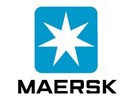China’s October Golden Week, Christmas and Chinese New Year will bolster strong demand for container shipping for the last quarter of 2021. But port congestion, especially in the US and Europe, and service delays are expected to create headwinds for service schedules. Extra loaders and ad hoc port omissions will be implemented to help improve reliability. Factories in south Vietnam are scheduled to reopen from early October. The demand for air cargo and intercontinental rail across Asia remains strong while trucking demand in China is set to rise 10% ahead of the holidays.
This month, Maersk shares the latest market trend before highlighting the issues and challenges we face, and we also explain Maersk’s latest solutions to help you keep cargo moving.
Market Trend
- The global economy remains robust although the pace of recovery has softened according to the global PMI manufacturing trends indicator. The global purchasing managers’ index hit 52.6 in August.
- Inventory levels in Europe and the US remain at their lowest levels on record, leading to stock outs on some products. This means even once retail demand declines, we will see cargo volumes continue to remain strong as inventory levels need to be rebuilt.
- Global container demand growth is projected at 6%-8% in 2021. The high 2021 forecast reflects the strong H1 as well as ongoing demand strength in the US and partly in Europe. Container demand growth ran ahead of supply growth in H2 2020 and into H1 2021, but the true drivers of high freight rates were congestions in ports and supply-chain bottlenecks including below factors:
- Capacity at ports: Vessel waiting time has increased requiring more ships per string to lift same cargo volume. At LA/long beach the waiting time has risen with 70+ vessels anchored in mid-September. Covid-19 led shutdowns have delayed vessels from Asia
- Warehousing capacity has been reduced due to port and landside congestion
- Returning empty containers back to Asia is challenging. Maersk has taken many actions to redirect flows back to Asia to ensure we have equipment supply. Despite this, equipment turn-round times continue to increase, driven by landside and seaborne delays.
Click here to read the full press release.
For more information: 
Baylie Zhang
A.P. Moller - Maersk
Tel.: +86 2123062351
Emai: baylie.zhang@maersk.com
